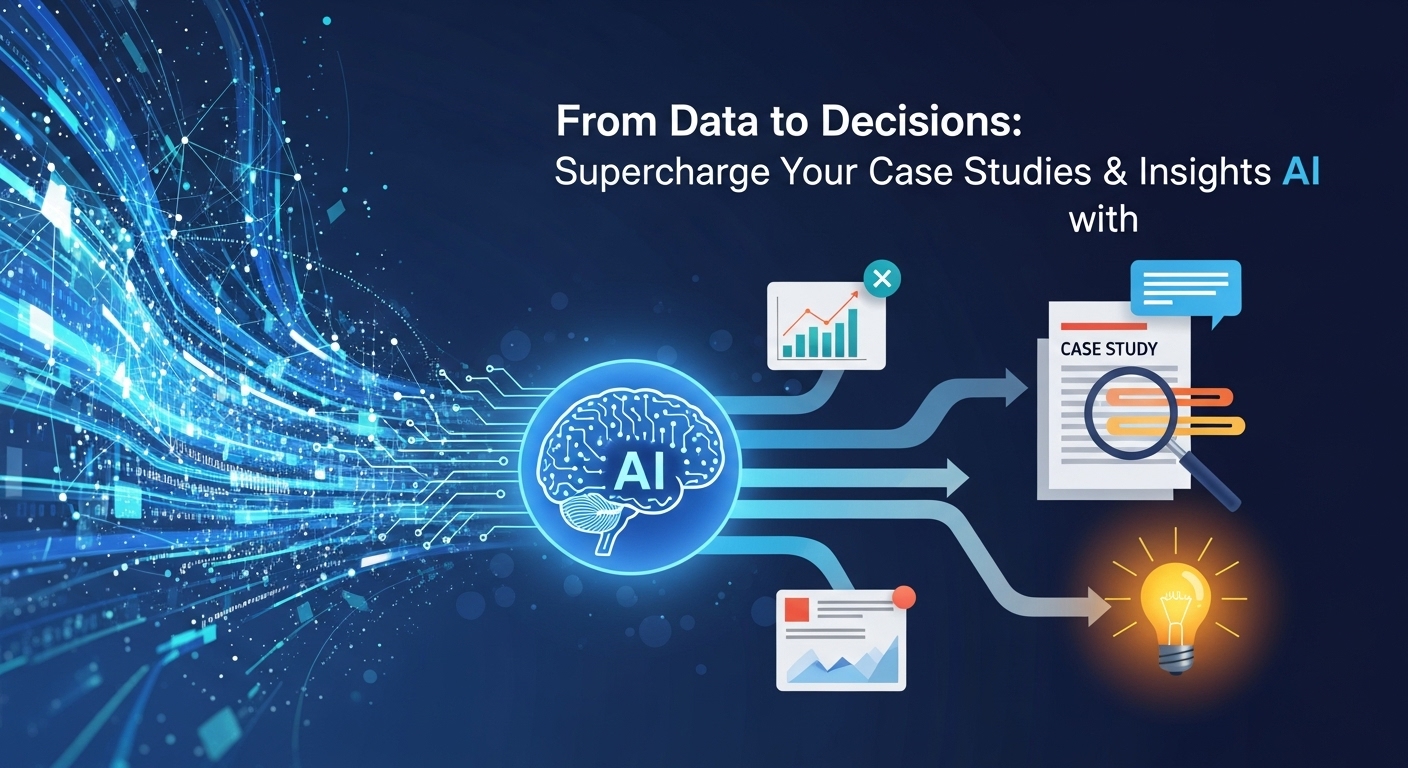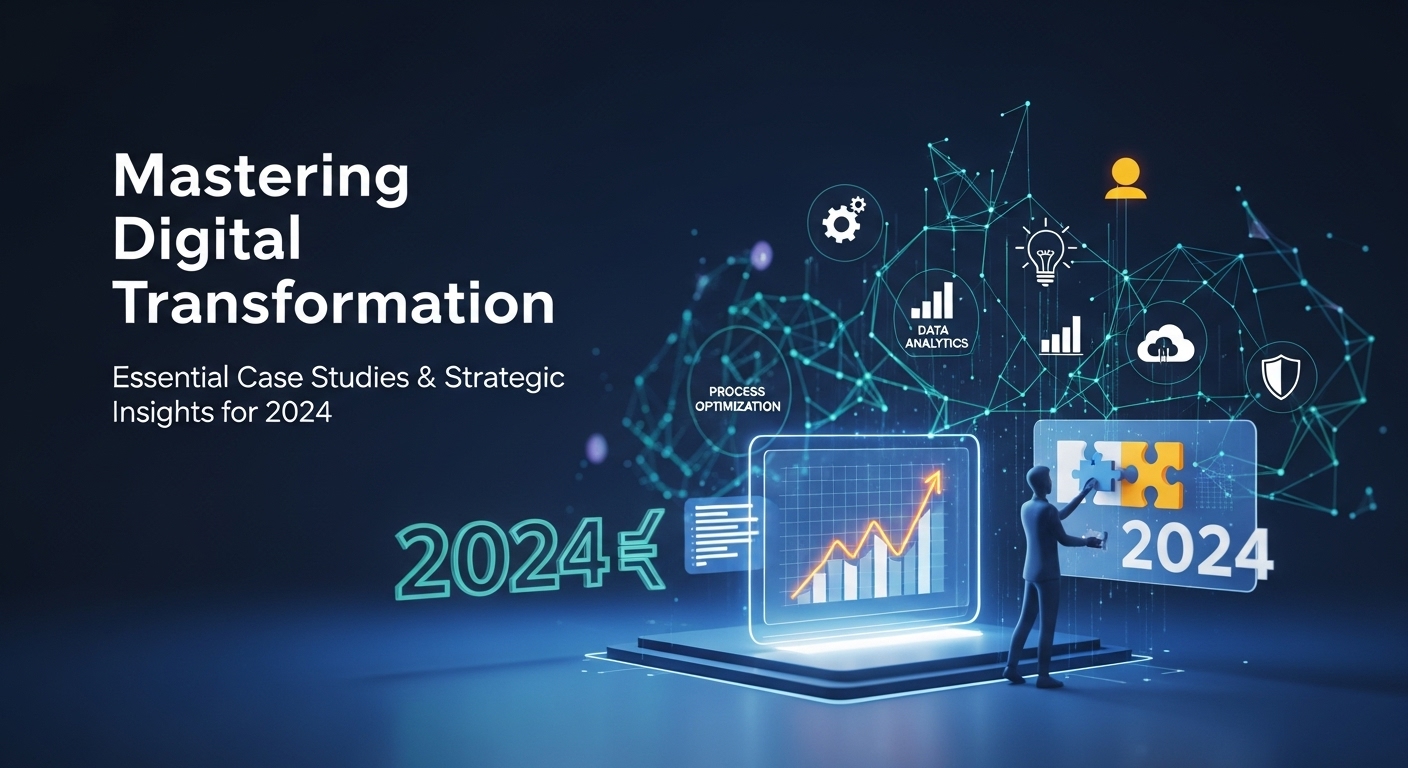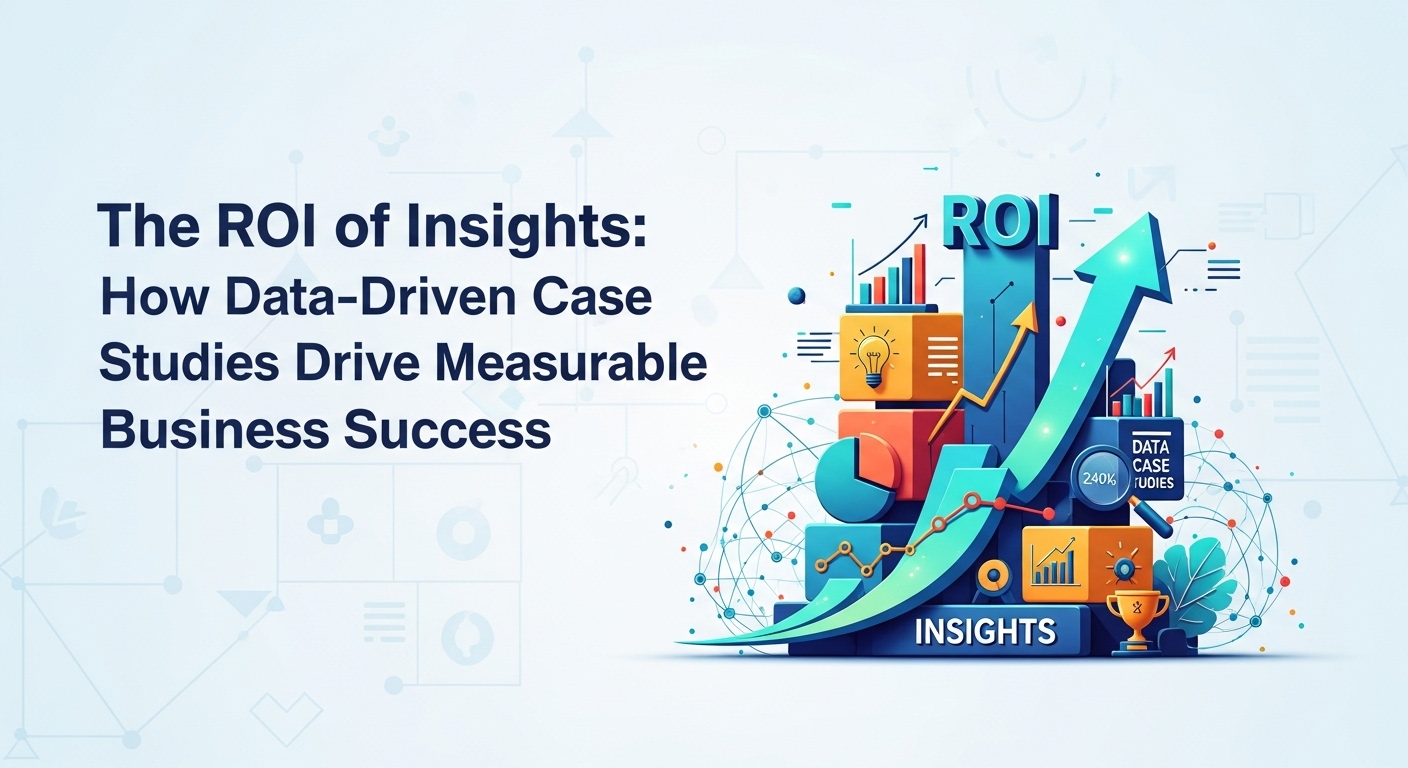The Evolution of Case Studies in the Digital Age
For decades, case studies have been the cornerstone of B2B marketing and sales enablement. They are the ultimate social proof, a tangible story of how a product or service solved a real-world problem for a real-world client. We’ve all read them: the classic problem-solution-result format. They’re reliable, they’re trusted, but let’s be honest—are they truly insightful? In an era overflowing with data, the traditional case study often feels like a snapshot taken with a vintage camera: charming, but lacking the depth and clarity we’ve come to expect.
The challenge today isn’t just about showcasing success; it’s about proving it with undeniable data and extracting forward-looking wisdom. Customers are more sophisticated than ever. They don’t just want to hear that you increased a client’s ROI by 30%. They want to know how. What specific factors contributed? What were the hidden variables? Could this success be replicated for them? Answering these deeper questions requires a new approach, one that goes beyond surface-level storytelling. This is where the intersection of case studies & insights becomes not just an opportunity, but a necessity for staying competitive.
Why Traditional Case Studies Are No Longer Enough
The manual process of creating a case study is fraught with limitations that cap its potential value. While the human element of storytelling is irreplaceable, the underlying analysis often falls short in a data-rich environment.
The Problem of Scale and Speed
Imagine you have hundreds of successful customer stories. How do you decide which ones to feature? Manually sifting through customer data, interview transcripts, and performance metrics is incredibly time-consuming. By the time you’ve identified a great candidate, gathered the data, and written the story, the market may have already shifted. This slow, laborious process means businesses can only produce a handful of case studies, often failing to represent the full spectrum of their customer base or use cases.
Surface-Level Insights
Without advanced analytical tools, we tend to focus on the most obvious wins—the headline metrics. We report on revenue growth, cost savings, or efficiency gains. While important, these are just the tip of the iceberg. What about the subtle correlations? Did a specific feature adoption correlate with the highest customer satisfaction scores? Did seasonal trends impact the outcome? Traditional methods make it nearly impossible to dig this deep, leaving a wealth of valuable case studies & insights buried within your data.
The Resource Drain
Creating a high-quality case study is a significant investment. It requires the time of your marketing team, your sales team, your data analysts, and, most importantly, your client. When the final output is a static PDF that only tells part of the story, the return on that investment is diminished. It becomes a resource-intensive exercise in producing marketing collateral rather than a strategic process for generating deep business intelligence.
Enter AI: The Game-Changer for Case Studies & Insights
Artificial intelligence is not here to replace the storyteller; it’s here to empower them with a supercomputer brain. By leveraging AI, companies can transform their case study process from a manual art form into a scalable, data-driven science. AI can analyze vast datasets in minutes, uncovering patterns and correlations that would take a human analyst weeks to find, if at all.
Automating Data Collection and Analysis
AI-powered platforms can connect directly to your CRM, product analytics tools, and customer support systems. They can automatically identify customers who have achieved remarkable results based on predefined KPIs. The system can flag an account that has, for example, a 200% increase in user engagement after adopting a new feature. This automates the discovery process, allowing your team to focus on nurturing the client relationship and crafting the narrative.
Uncovering Hidden Patterns and Predictive Insights
This is where AI truly shines. Machine learning algorithms can analyze thousands of data points across your entire customer base to understand the DNA of success. It can answer complex questions like: ‘What sequence of actions most often leads to a high-value outcome?’ or ‘Which customer segments benefit most from a particular service?’ These deep insights not only make for a far more compelling case study but also provide your product and sales teams with a predictive model for future success.
Personalizing Case Study Narratives at Scale
With AI, you can move beyond one-size-fits-all case studies. By understanding the deep insights from the data, natural language generation (NLG) tools can help draft multiple versions of a case study, each tailored to a different industry, company size, or pain point. A prospect in the healthcare industry could receive a version that emphasizes compliance and patient data security, while a retail prospect’s version would highlight inventory management and e-commerce integration—all derived from the same core success story but framed for maximum relevance.
Real-World Example: How a SaaS Company Tripled Conversions with AI-Powered Case Studies
Let’s look at a hypothetical but realistic example. ‘ConnectSphere,’ a project management SaaS company, was struggling to make their success stories stand out. Their case studies were generic and failed to resonate with their diverse target personas.
The Challenge: Generic, Uninspiring Success Stories
ConnectSphere’s case studies followed the old formula: a client was disorganized, they adopted ConnectSphere, and now they’re organized and saved ‘X’ hours per week. This message was falling flat because it lacked specific, data-backed proof and failed to address the nuanced challenges of different industries.
The Solution: AI-Driven Insight Generation
They implemented an AI analytics tool that integrated with their platform’s usage data and their CRM. The AI analyzed data from their top 500 most successful clients. It didn’t just look at hours saved; it looked at over 100 variables, including feature adoption rates, team communication patterns, integration usage, and project completion velocity. The AI uncovered a powerful insight: clients who heavily used the ‘Gantt Chart to Timeline Sync’ feature in conjunction with the Slack integration saw a 45% faster project completion rate than other power users. This was a specific, actionable insight they had never identified before.
The Results: Measurable Impact on the Bottom Line
Armed with this insight, ConnectSphere revamped their case studies. Instead of a generic story, they created a powerful narrative around ‘The Timeline Sync Advantage.’ They built targeted campaigns around this data-proven concept, showing prospects exactly how this feature combination drives efficiency. The result? Their conversion rate for leads who engaged with the new case studies & insights tripled because the stories were no longer just claims; they were data-backed roadmaps to success.
Practical Steps to Integrate AI into Your Case Study Workflow
Ready to supercharge your own process? Here’s a simplified roadmap to get you started.
Step 1: Identify Your Key Data Sources
Where does the story of your customer’s success live? Map out all your data repositories: CRM (e.g., Salesforce), product analytics (e.g., Mixpanel, Amplitude), customer support tickets (e.g., Zendesk), and financial systems. The more comprehensive your data, the richer the insights AI can uncover.
Step 2: Choose the Right AI Tools
You don’t need to build a custom AI from scratch. There is a growing ecosystem of tools that can help. Look for business intelligence (BI) platforms with machine learning capabilities (like Tableau or Power BI with AI features) or dedicated customer data platforms (CDPs) that specialize in generating user insights.
Step 3: Define Success and Ask the Right Questions
Guide the AI. What does a ‘successful customer’ look like for your business? Define clear KPIs. Then, start asking strategic questions. ‘What behaviors are common among customers who renew?’ or ‘Is there a correlation between attending our webinars and product feature adoption?’
Step 4: Craft the Narrative Around AI-Generated Insights
Once the AI delivers the ‘what’ (the data and patterns), it’s your marketing team’s job to explain the ‘so what?’ Weave these powerful, specific data points into a compelling narrative. Use the insights to build a story that is not only believable but also provides a blueprint for your prospects.
The Future is Insight-Driven: Your Call to Action
The age of the static, formulaic case study is over. The future belongs to businesses that can transform their customer success data into strategic intelligence. By integrating AI into your workflow, you can stop just telling people you’re effective and start showing them precisely how and why. You can move from simply creating marketing assets to building a powerful engine for generating deep case studies & insights that drive conversions, inform product development, and give you a commanding competitive edge. Don’t let the stories hidden in your data go untold. Start exploring how AI can help you uncover them today.


